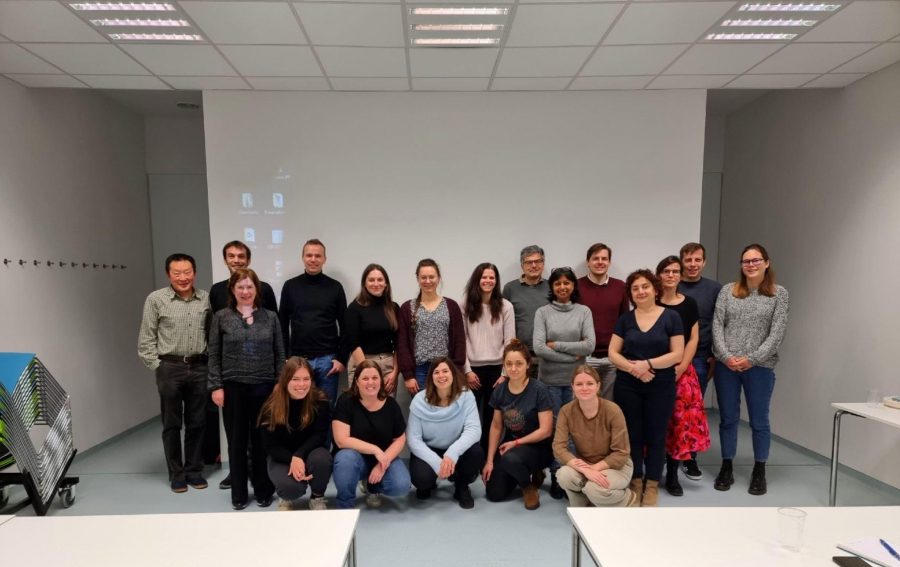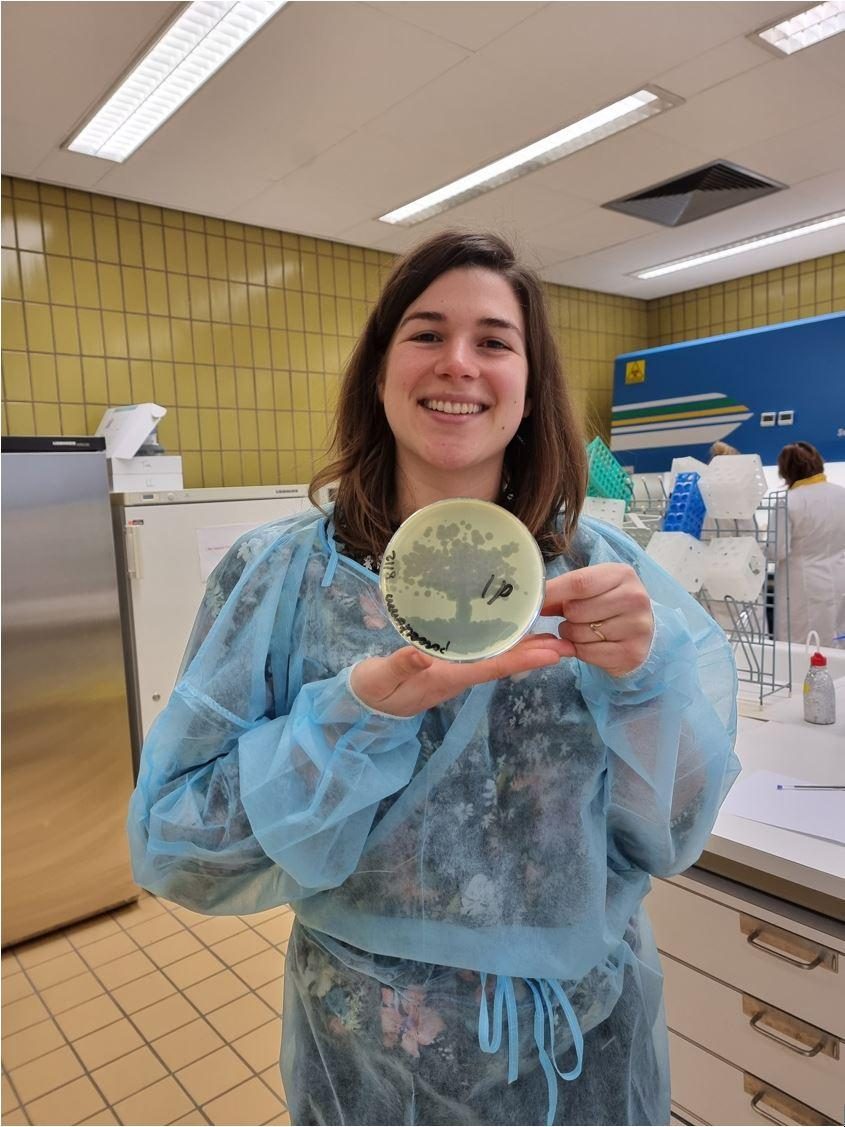Inspiring story Testimonials from the first BSVoM hands-on workshop ‘Personalized phage therapy: from the lab to the patient’

"Recipes for success"
A testimonial by Thomas Häusler
Who is Thomas Häusler?
A basis for successful research is access to good lab procedures which are grounded in data but also in the experience of well-versed practitioners. In that sense, lab work has much in common with cooking. For instance, a certain willingness of scientists and chefs to forgo a trusted recipe (aka SOP) if they have a hunch that there might be even better ways of doing an experiment – work in a lab or a kitchen as a fruitful mixture of science, art, and handicraft.
In the world of chefs, molecular gastronomy draws from both, science and cooking. In science, phage therapy seems a particularly good example of a similar phenomenon: a vast body of scientific literature is combined with clinical experience, the latest genetic methods and much more. And there are more analogies between these two worlds. Think of fusion cuisine which makes use of culinary traditions of different countries – as the phage laboratory at the Queen Astrid Military Hospital (QAMH) merges its own 2 decades of research into phage therapy with the experience and knowledge gained over a century by the Eliava Institute in Tbilisi, Georgia.
This enticing fusion science is exemplified by the faculty of the 2-day workshop in personalized phage therapy that was offered by the QAMH in December 2022: It was organized by Jean-Paul Pirnay, Maya Merabishvili and Tea Glonti, the latter two having their scientific roots in the Eliava Institute. An irresistible prospect for a professed phage enthusiast, trained biochemist and hobby cook like me. The workshop was sponsored by the Belgian Society for Viruses of Microbes (BSVoM) with the goal of training young and not-so young viruses-of-microbe researchers to spread this phage expertise and knowledge in their own labs and to motivate them to stay in this field, as BSVoM’s chairman Yves Briers puts it. In consequence, the Belgian Phage Valley which grew in the last years should be strengthened further.
At the heart of the workshop were lab techniques and procedures that form the basis of phage therapy: Methods for phage isolation, selection, measuring lytic activity, host range determination and phage training. Maya, Tea and Jean-Paul discussed the theoretic foundation in short lectures which was subsequently applied in hands-on sessions in the lab. The pets we used were Pseudomonas aeruginosa and their phages. True to what was said before about the importance of experience, the two most important procedures used date back to the 1930s (Double Agar Layer Method or Gratia’s method) or even to the 1920s (Phage Liquid Culturing Method or Appelman’s method), and also true to what was said before they need the diligence of an SOP as well as a skilled hand and an experienced eye.
A skilled hand, for example, is useful for the different versions of the streak assay which helps to screen a high number of phages for their lytic activity on different bacterial strains. The trained eye recognizes the subtle shades of plaques which carry a lot of information: small plaques signal big phage particles which are slow to diffuse whereas plaques with a halo could indicate a phage that sports additional lytic enzymes. Pro tip: turbid plaques do not always point to a lysogenic phage, but they might arise as well when a bacterial strain acquires resistance to a phage and the initial plaque gets overgrown. It might still be worthwhile to check this phage for his lytic prowess on other bacterial strains we were told.
A very interesting procedure demonstrated at the workshop is the so-called phage training. This was very timely indeed: at the same time, we learned about the great potential of trained phages for patients, football players demonstrated the value of training at the world cup in Qatar. Of course, with all the attractive phages in front of us nobody had eyes for footballers. To train a phage enables it to attack and lyse a larger number of bacterial strains as it originally was capable of. Hence, one can try to train a phage from a bank or freshly isolated from nature to extend its host range and thus become able to attack a tenacious strain from a patient. Training is done by serially passaging phages on bacterial cultures in different ways. At the beginning of 2022 a team of the QAMH and other researchers published a paper in which they describe how they helped a patient with trained phages*.
Phage therapy is experiencing a period of rapid development in different areas, fast screening for therapeutic phages is one example. The phage lab at the QAMH is part of this endeavour and was generously sharing its acquired knowledge at the workshop. Tea and Maya demonstrated in detail how they are using the Omnilog system to rapidly analyse phage virulence and other properties of a large number of samples – saving precious time to find a good phage for the treatment of a patient or an optimal combination of phage and antibiotic.
This short account can only give a glimpse into a rich schedule that provided an excellent basis for further adventures in phage land. It was topped off by lectures about the experiences the QAMH phage team has made in the last years with practical phage therapy, about the Magistral Phage concept which has made phage therapy possible in Belgium, and finally by a visit of the clean room facilities where the therapeutic phage preparations are made that are used in Belgium and other countries to save the lives of many patients. In one of the clean rooms the researchers are busy to cook up new SOPs to produce ever larger volumes of therapeutic phage preparations. They are needed.
*Eskenazi A, Lood C, Wubbolts J, et al. Combination of pre-adapted bacteriophage therapy and antibiotics for treatment of fracture-related infection due to pandrug-resistant Klebsiella pneumoniae. Nat Commun. 2022;13(1):302. doi:10.1038/s41467-021-27656-z
What others are saying about the workshop
Celia Pas, PhD student in group Yves Briers (Ghent University): "It was great to learn the more practical approach to phage research. With all the tips and tricks, you can really feel the years of experience at the QAMH/LabMCT and their never-ending motivation to save patients. The workshop did not only teach us how to plate phages like magical trees, but also covered the current hurdles towards the future of phage therapy. Without the collaboration of passionate people in quality control, government, research, medicine and industry, phage work and the magistral phage legislation in Belgium wouldn’t be where it is today. I too feel, as Maya said beautifully, that the era of phages lies in the years to come! Special thanks to Maya Merabishvili, Tea Glonti, and the BSVoM for organizing this workshop. Let’s all live by Jean-Paul Pirnay's quote and use our phages to make antibiotics great again!"

